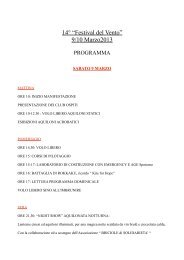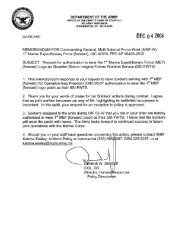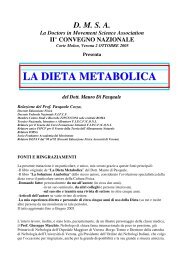Science vs. religion : what scientists really think - File PDF
Science vs. religion : what scientists really think - File PDF
Science vs. religion : what scientists really think - File PDF
You also want an ePaper? Increase the reach of your titles
YUMPU automatically turns print PDFs into web optimized ePapers that Google loves.
202 NOTES TO PAGES 92–95Jacobson, “What Makes David Run,” A8–12 . See also Smallwood, “In a Clash ofAcademic-Freedom Titans, Civility Reigns,” A16 .20. See Jacobson, “What Makes David Run.”21. In broader public dialogue outside the Religion among Academic Scientistsstudy, see also Dawkins, The Blind Watchmaker and The God Delusion ; Holden, “SubjectingBelief to the Scientific Method” ; Kramnick and Moore, “The Godless University”; and Krauss, “When Sentiment and Fear Trump Reason and Reality.”22. See, in particular, Schuster and Finkelstein, The American Faculty , where theyprovide statistics on faculty life at different types of universities and colleges, accordingto discipline. On p. 463 they provide a table showing the average number of hoursworked by faculty at research universities. The average hours per week for these facultyincreased seven hours between 1972 and 1998.23. See Wuthnow, Communities of Discourse , for an argument that the Enlightenmentdeveloped as a result of social and structural conditions in a particular historicalperiod that made the cultural innovations of the Enlightenment possible.24. See Evans and Evans, “Religion and <strong>Science</strong>.” This culture war language comesfrom James Davison Hunter’s work but has been applied in many different contexts.See Hunter, Culture Wars . See Gibson, “Culture Wars in State Education Policy,” forapplication in a specifically scientific context.25. Chem 24, conducted February 21, 2006.26. See Schmalzbauer and Mahoney, “American Scholars Return to StudyingReligion.”27. I am indebted to Rita Kasa for help with the task of ascertaining courses with a<strong>religion</strong>-and-science content at the particular universities studied. In order to obtaininformation about courses that deal with <strong>religion</strong> and science, or science and society, Iaccessed the home page of each respective university. In almost all cases, I had to furtheraccess home pages of schools and departments at the university in order to find listingsof courses offered. In the majority of cases, undergraduate and graduate course listswere provided separately by schools and departments. When I started reviewing courselistings, I looked at courses offered by every single department. After I had reviewedcourses at five universities in this manner, I came to the conclusion that natural sciencesdepartments do not offer these courses, or if they do, they cross-list them from humanitiesdepartments. From that point on, I continued reviewing courses offered only bysocial sciences and humanities departments, such as American studies, anthropology,history, philosophy, religious studies, and sociology. The decision to include courses inthis list was based on the relevance of the course to the theme “science and society” or“science and <strong>religion</strong>” as presented in the course description or the title of the course.Except at Cornell, historians of science are rarely housed in natural sciences departments.28. Econ 29, conducted April 20, 2006.29. Econ 26, conducted March 14, 2006.30. Chem 25, conducted March 1, 2006.31. Bio 33, conducted April 12, 2006.
















